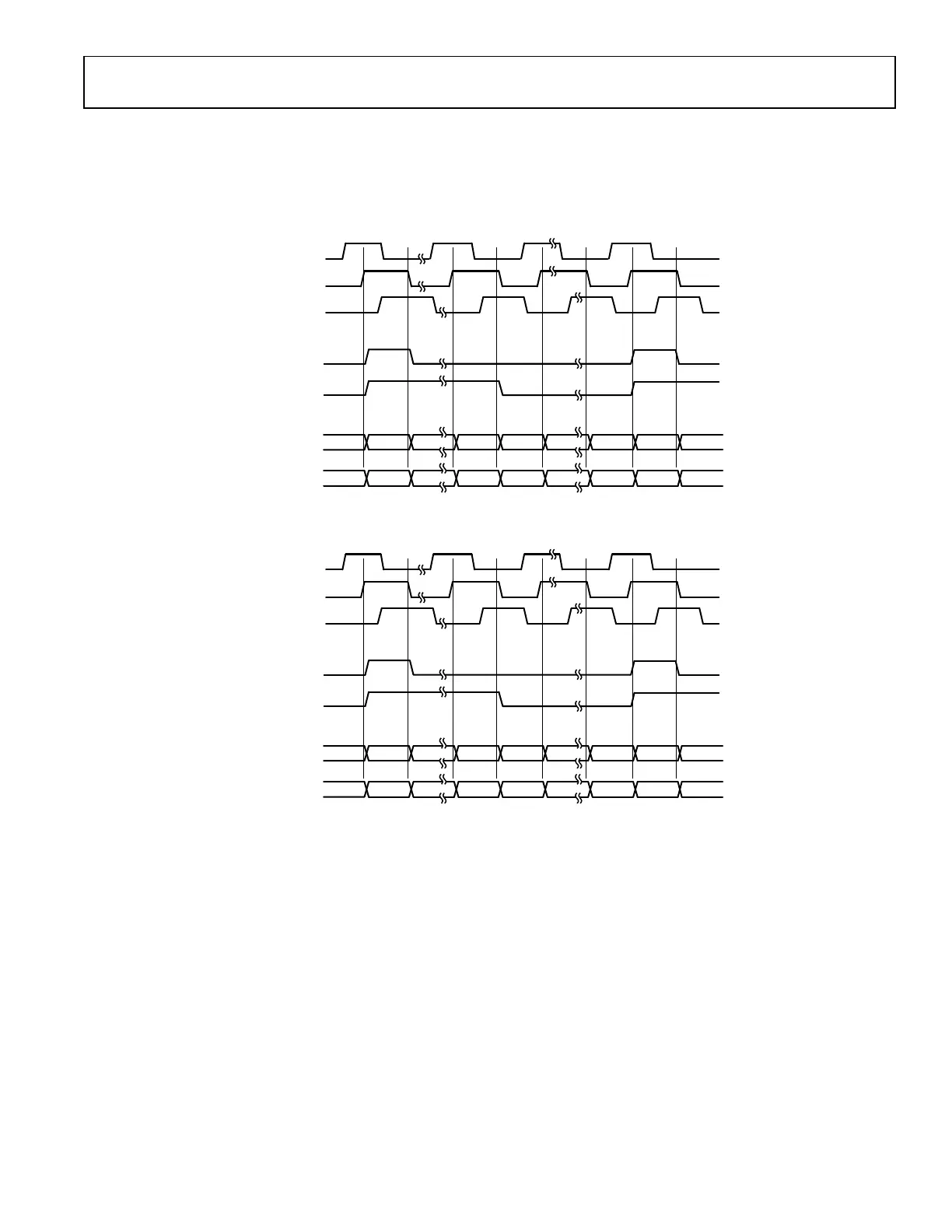Preliminary Technical Data UG-1828
Rev. PrB | Page 63 of 277
Tx Timing Parameters Description
Provided
By
Bounds Comments
enableRiseToOnDelay
(t
TxEnaRise2On
)
Delay between Tx_enable
rising edge and antenna
switching to Tx channel. It
should align with the desired
time when the first symbol is
on air.
(If ADRV9001 is not controlling
antenna switch, this
parameter is not needed
except to determine other
parameters.)
User
Parameter
Min: 0
Typical: t
TxPD
Max: t
TxGT
+ t
TxPD
@ min bound: antenna switch
occurs t
TxEnaSetup
+ some margin
after Tx enable rising edge
@ typical value: all symbols sent
over interface (including guard
symbols) make it onto the air
@ max bound: no guard symbols
are transmitted over the air
enableRiseToAnalogOnDelay
(t
TxEnaRise2AnaOn
)
rising edge and analog power
up begins
parameter
Min: 0
Max: t
TxEnaRise2On
−
t
TxEnaSetup
If Tx propagation delay is long, the
analog power up can be delayed
for power saving or to keep Tx
analog powered down during Rx
frame. If Tx propagation delay is
small, this should be set to 0. If this
parameter is greater than its max
bound, the antenna switch time
could be delayed.
enableGuardDelay
(t
TxGT
)
Guard time at the beginning
of the Tx frame. Reserved for
future use. Should set to 0
currently.
User
parameter
Min: TBD
Max: TBD
TBD
enableHoldDelay
(t
TxEnaHold
)
Delay between the falling
edge of Tx_enable and the Tx
interface being disabled.
(ADRV9001 forces it to 0
currently. Tx interface is
disabled at the same time
when Tx is disabled.)
User
parameter
Min: 0
Max: None. Must be
optimized to be
minimal.
Tx_enable falling edge should
ideally come as last valid data is
sent over interface. This can be
used to disable Tx algorithms
whose performance may be
degraded if guard symbols are
used. Interface can be kept on
even after Tx_enable falling edge
to allow transmission of user
guard symbols.
enableFallToOffDelay
(t
TxEnaFall2Off
)
Delay between Tx_enable
falling edge and antenna
switching to Rx channel and
Tx analog powers down. (Even
if ADRV9001 is not controlling
antenna switch, this
parameter is still needed to
delay analog power down.)
User
parameter
Min: t
TxEnaHold
Max: None. Must be
optimized to be
minimal.
(Recommended
Max: t
TxEnaHold
+ t
TxPD
Note t
TxEnaHold
is
forced to 0
currently.)
@ min bound: antenna switch
occurs soon after Tx interface is
disabled. It should always occur
prior to powering down of Tx
analog. Not all symbols in the path
make it on air.
@ max bound: antenna is switched
away from Tx channel just as last
user data has propagated to
antenna.
Design Strategies for Transmit Timing Parameters
Use Case 1: t
TXPD
> t
TXENASETUP
In this case, because the propagation delay is larger than the transmit analog setup delay, user may choose to delay powering up analog
front end while the data is propagating through the digital datapath as shown in Figure 54. This could achieve better power savings. For
example, if the user measures the propagation delay as 2.5 ms, whereas the enableSetupDelay provided by ADRV9001 is 8 μs, analog
front end could be off to avoid burning power for the first 2.492 ms of the propagation time. Having the analog front end powered up
early could also be a liability. For example, if the transmit propagation path delay is longer than the guard time between receive and
transmit frames, the transmit enable rising edge may occur in the middle of an receive frame. In this case, the user may want to keep the
analog front end of the transmitter channel powered down until the end of the receive frame. In such a case, the enableRiseToAnalogOnDelay
should be set to some value less than or equal to
propagationDelay – enableSetupDelay

